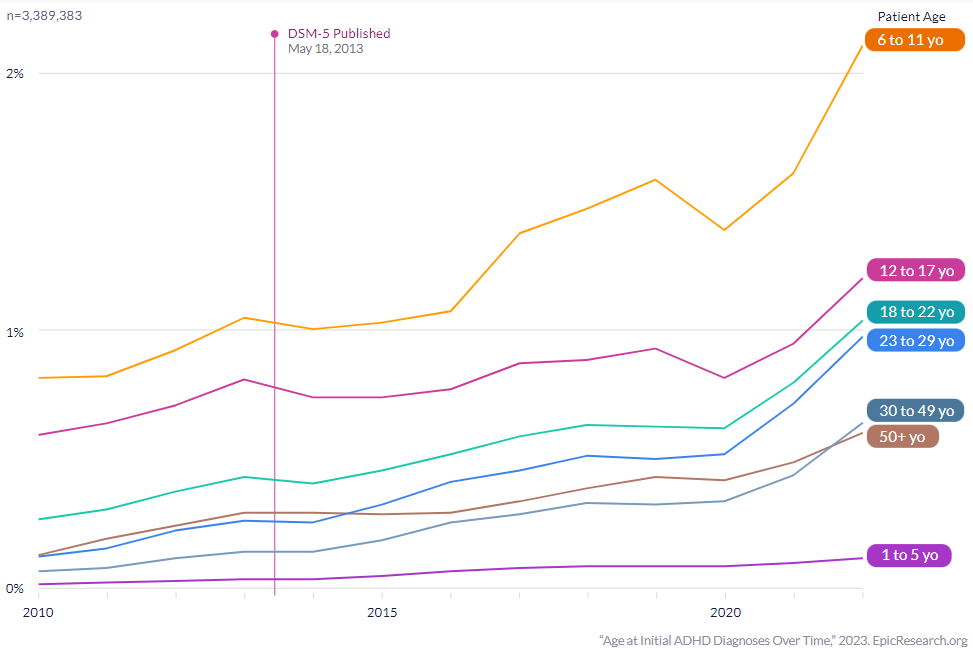Reminder: we are people managers, not psychologists, and it’s not our job to diagnose any individuals on our teams. This guide is meant as an aid to shape your general policies and practices used for all team mates.
It’s time to admit to ourselves that the nature of work has undergone a significant transformation, with remote work becoming a prevalent and lasting aspect of many industries. As employers strive to attract and retain top talent, it is crucial to understand that your top talent includes team members with Attention Deficit Hyperactivity Disorder (ADHD) (whether diagnosed or not). With that understanding out of the way, we must then create general policies that address the needs of employees with varying abilities, including those who may be dealing with ADHD. This comprehensive guide aims to provide practical strategies for employers to effectively manage and support remote employees with ADHD. By following these guidelines, employers can create an inclusive and productive remote work environment that maximizes the potential of all team members.
Understanding ADHD and Its Impact on Remote Work
ADHD is a neurodevelopmental disorder characterized by symptoms such as inattention, hyperactivity, and impulsivity. It affects individuals’ ability to focus, organize tasks, manage time, and regulate emotions. While remote work offers various benefits, it also presents unique challenges for individuals with ADHD due to increased autonomy and reduced external structure.
According to an MIT Sloan article (Hamdani, Hamdani, Das), employees with ADHD can excel in remote work environments when provided with appropriate support. However, they may struggle with maintaining focus, managing time, and communicating effectively in virtual settings. This underscores the importance of tailored strategies to address these challenges.
What’s behind the sudden increase in Diagnoses?
During the pandemic, some individuals experienced a transition from manageable concentration issues to more severe problems that necessitated professional intervention, as noted in this study conducted by Changwon Son et. al (Texas A&M). Factors such as disrupted routines, increased stress, reduced sleep, and heightened social media usage created a perfect storm of distractions that exacerbated symptoms for some. Additionally, the pandemic facilitated easier access to ADHD diagnoses and treatment through relaxed regulations on telehealth and remote prescription of controlled substances. While this increased accessibility benefited many, concerns emerged about potential over-treatment and over-diagnosis, particularly when certain teletherapy services began excessively prescribing stimulants, prompting federal investigators to raise alarm bells. As a result, some teletherapy platforms have since ceased prescribing stimulants like Adderall.

Fuzzy Radio Signals

At the risk of losing some of our younger readers that have never played with an old manual-tuning radio, an analogy for someone with ADHD struggling to concentrate during remote work could be likened to one of those old radios trying to tune into a specific station amidst a flurry of competing frequencies. Have you ever played with one of these radios with the knobs and frequency selector that would slide back and forth? If so, you’ve probably had the experience of trying to get a certain radio station without getting any interference from any other station or signal source.
Just as the radio’s signal can easily get lost or disrupted by interference, individuals with ADHD might find it challenging to maintain their focus and clarity in the midst of the distractions that can come with remote work environments. Just as the radio needs a clear channel to capture the desired station, individuals with ADHD may require tailored strategies and accommodations to help them tune into their tasks effectively while working remotely.
Practical Strategies for Remote ADHD Employee Support
Let’s get into some practical strategies that all managers should master since they will likely have a few ADHD sufferers on the team. Again, these are important things to consider implementing with all team members. Nobody likes to be singled out, and it’s not your job to make a diagnosis.
- Clear Communication and Expectations: Establish transparent communication channels and expectations. Clearly outline project goals, deadlines, and priorities. Regular check-ins can help remote employees with ADHD stay on track and feel supported.
- Structured Routine: Encourage employees to establish a daily routine, including set work hours, break times, and dedicated workspace. Consistency can aid in managing time and staying organized.
- Task Breakdown: Assist employees in breaking down complex tasks into smaller, manageable steps. This approach can prevent feeling overwhelmed and improve focus.
- Digital Tools and Technology: Provide access to tools that aid time management and organization, such as task management apps, calendars, and reminder systems.
- Flexible Work Arrangements: Allow flexibility in work hours when feasible. ADHD symptoms can vary throughout the day, and accommodating individual peak productivity times can enhance performance.
- Regular Feedback: Provide constructive feedback and recognition for accomplishments. Positive reinforcement can motivate employees with ADHD and reinforce desired behaviors.
- Training and Education: Offer training on time management, organizational skills, and remote work best practices. Online resources and workshops can empower employees to develop essential skills.
- Accommodations: Respect legal requirements for workplace accommodations under the Americans with Disabilities Act (ADA). Engage in an interactive process to determine reasonable accommodations that enable optimal job performance (EEOC, n.d.).
- Wellness Support: Promote employee well-being through wellness programs, mental health resources, and access to Employee Assistance Programs (EAPs).
Embracing Remote Work as a Permanent Paradigm
The ongoing shift towards remote work is not merely a temporary trend; it has become a fundamental aspect of the modern workplace. To attract and retain the best talent, employers must recognize the importance of offering remote work options. A survey conducted by Harvard Business Review found that U.S. Executives (the people forming their own company’s WFH policies) expect remote work to increase in the future.

According to Harvard Business Review’s Survey of Business Uncertainty, those that shape Work From Home policies at their own firms expect Remote Work to keep increasing.
Remote work is only going to increase in future years. Employers who wish to embrace remote work and effectively manage remote employees with ADHD can capitalize on the benefits of a flexible work environment. By implementing the strategies outlined in this guide and ensuring compliance with legal requirements, organizations can foster an inclusive culture that values diversity and empowers every employee to thrive.
Legal Considerations and Workplace Accommodations
When managing remote employees with ADHD, it is imperative to understand and adhere to legal guidelines to ensure a fair and inclusive work environment. The Americans with Disabilities Act (ADA) prohibits discrimination against individuals with disabilities, including ADHD, and requires employers to provide reasonable accommodations that facilitate job performance. Reasonable accommodations could include modified work schedules, assistive technology, and altered task assignments.
The Equal Employment Opportunity Commission (EEOC) provides guidance on how to engage in an interactive process with employees to determine appropriate accommodations. This process involves open communication, mutual agreement on accommodations, and ongoing evaluation of their effectiveness. Employers should document this process to demonstrate compliance with legal requirements and their commitment to fostering an inclusive workplace.
In conclusion, managing remote employees with ADHD requires a combination of empathy, communication, and strategic support. By understanding the unique challenges faced by individuals with ADHD in remote work settings and implementing tailored strategies, employers can create an environment where all employees can excel. Embracing remote work as a lasting paradigm and ensuring compliance with legal guidelines will not only benefit employees with ADHD but also contribute to a more engaged, productive, and inclusive workforce.





